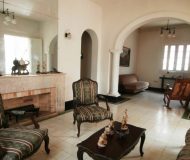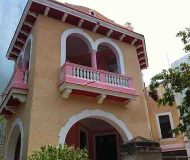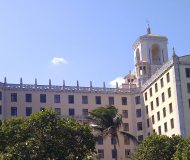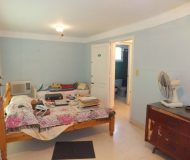Cuba Info
Cuba will light up your senses with beautiful sights, sensuous sounds, delicious Caribbean tastes and its warm, tropical climate. To get the most of your trip to this unique island, it is a good idea to learn a few facts about the country before you visit.
Seasonal Schedule
Cuba has a year-round warm climate with temperatures averaging 24ºC, but during the winter season from November to January, temperatures can drop down to around 10 degrees at night. It’s during these months that the country experiences the least rainfall, so this is generally considered the high season period when most tourists visit the island.
Between May and October, Cuba experiences heavier rain, although rarely for more than a couple of hours at a time. Even during hurricane season in September and October, the island’s location means it generally fares much better than many of its neighbours.
Moving Around
Public transport is generally very slow in Cuba and travellers that rely on it are often met with cancellations and delays. The seemingly simple task of buying and booking tickets can become very complicated, although more efficient systems are slowly being implemented.
For those with time on their hands, however, public transport is cheap and safe, plus a great way to see many aspects of every day life in Cuba while getting to know the locals. Inter-provincial buses connect most of the provincial capitals, while local bus services – which are very laid back and require a great deal of flexibility – rarely stick to a timetable, or even inform passengers where they are heading.
Taxis are abundant and come in all kinds of shapes and sizes, from vintage cars to three-wheeled bicycles and motorbikes – all of which can be hired for a pre-agreed fee.
Cuba also offers a train service, with a main line connecting Havana and Santiago de Cuba. The trains are slow but relatively reliable and a great way to see the countryside.
Currency Conversion
Cuba has two currencies. The locals use the Cuban peso (CUP), which is the currency used to pay salaries, while the Cuban convertible peso (CUC) is the currency most tourists are expected to use. Both forms of tender are worthless and unobtainable outside of Cuba, and be prepared to carry low denominations, as many smaller shops, restaurants, taxis and train stations will not be able to change larger notes. US dollars can be exchanged in Cuba against a 10 percent service charge, however, and Visa or MasterCard debit and credit cards are widely accepted.
Accommodation Options
In Cuba, visitors generally choose one of two accommodation options, either hotels or casas particulares. The island’s hotels are divided into two categories: local properties – which are government owned – or international chains. While staying at an international chain hotel or resort is obviously ideal for the convenience and services provided; staying at one of the island’s casas particulares – private homes – offers a rare chance to learn about Cuban culture and get to know local people better. Whichever option you choose, the choices are expanding every year, and longer stay visitors also have the option of renting or even buying a cuban property.
Stay Healthy
The Cuban healthcare system is often touted as one of the best and most efficient in the world so visitors should not be worried about receiving quality treatments, if needed. The doctors are well trained and the facilities are generally up to western standards. However, it is still essential to buy a health and travel insurance and to make sure it covers all of the activities that you will be undertaking on the island – including outdoor adventures such as trekking and scuba diving.






